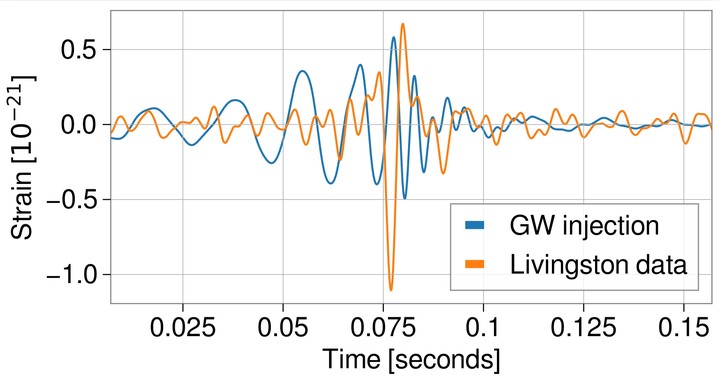Sky localisation
 Noise in the data overlaps and cancels the gravitational-wave signal
Noise in the data overlaps and cancels the gravitational-wave signalGravitational-wave data often contains noise artefacts (also called glitches).
In fact, as many as 24% of astrophysical signals during the third LIGO-Virgo-KAGRA observing run had a glitch nearby.
A glitch can be confused with a gravitational-wave signal causing incorrect estimation of source parameters.
One example of a problem arising from confusing glitches with astrophysical signals is the incorrect sky localisation of the signal. If the sky localisation of an astrophysical signal is incorrectly determined, it is less likely to detect a counterpart in the electromagnetic spectrum. This would result in losing loads of information about the source of gravitational waves.
I tested how different glitches affect the sky localisation of various astrophysical signals (binary black holes, binary neutron stars, and neutron star-black hole binary). I found that short signals, such as binary black holes, are not usually affected by glitches unless they exactly overlap (see the image above). However, longer-duration signals like a neutron star-black hole binary are affected by glitches.
For more details, read our article published in PRD: link or free-access version on ArXiv: link.